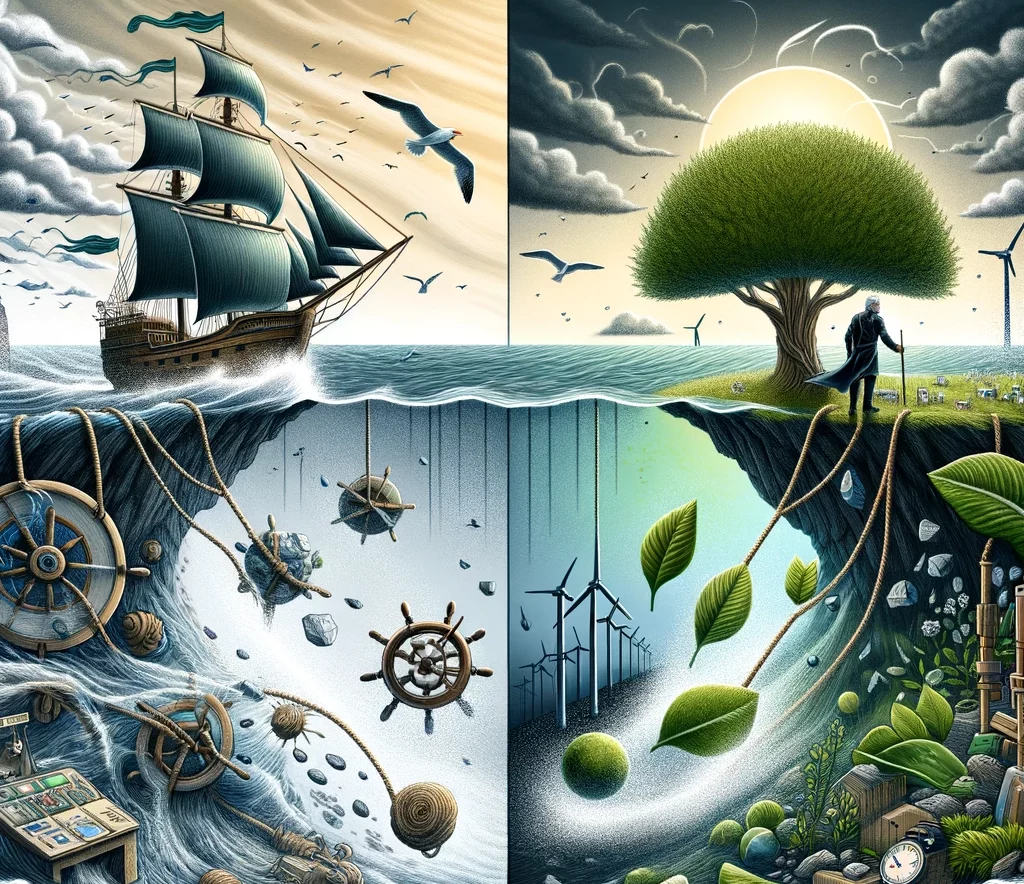Blog

Harnessing the Winds of Change: Climate Conscious Leadership
The clarion call of climate change presents an unprecedented challenge for today’s business leaders. As the guardians of tomorrow’s legacy, they find themselves at the forefront of an environmental maelan, tasked with navigating their organizations through the stormy waters of sustainability. This voyage, though fraught with peril, also offers a unique opportunity to redefine the essence of leadership and to commit to a path that is not only profitable but also sustainable for the planet.
The leadership imperative in addressing climate change is a stark departure from traditional business concerns that focused solely on the bottom line. Today, leaders are being called upon to debunk short-sighted myths surrounding sustainability — myths that often portray environmental responsibility as antithetical to economic success. This view, however, is rapidly losing ground as evidence mounts to prove that sustainable practices not only benefit the environment but also create long-term value for businesses.
Countering these myths requires leaders to adopt a more enlightened perspective on what sustainability truly means. It’s not just about recycling or switching off lights; it’s about embedding environmental consciousness into the very fabric of organizational culture. This shift entails a thorough reassessment of operations, supply chains, and product lifecycles, ensuring they align with principles of sustainability and environmental stewardship.
The dichotomy between ‘Green-washing’ and ‘True Green Leadership’ is a crucial consideration in this endeavor. Whereas ‘Green-washing’ refers to superficial or deceptive practices designed to appear eco-friendly without enacting substantial change, ‘True Green Leadership’ embodies a genuine commitment to sustainability that permeates all aspects of business operations. True Green Leaders recognize that their actions have far-reaching implications beyond the immediate operational sphere, impacting ecosystems, communities, and future generations.
Embarking on this path necessitates a blueprint for embedding sustainable practices into business strategy. This begins with a visionary approach that sets ambitious environmental goals and integrates them into the organization’s mission and values. It requires innovative thinking to redesign products and processes through the lens of sustainability, seeking out eco-friendly materials, energy-efficient methods, and waste-reduction techniques. Furthermore, it involves engaging stakeholders — from employees and suppliers to customers and communities — in a united effort to achieve these goals.
For leaders willing to embrace this journey, several strategies can pave the way:
- Set Clear Environmental Goals: Define specific, measurable targets that align with broader sustainability objectives. This could include reducing carbon emissions, increasing energy efficiency, or achieving certain waste-reduction milestones.
- Foster Collaboration and Engagement: Encourage every member of the organization to contribute ideas and take action towards sustainability goals. Engaging suppliers, partners, and customers in these efforts can amplify the impact.
- Invest in Sustainable Technologies: Explore innovations that can enhance environmental performance, such as renewable energy, green materials, and circular economy models.
- Promote Transparency: Keep stakeholders informed about the organization’s environmental initiatives and progress. This builds trust and elevates the organization’s reputation as a responsible leader.
- Lead by Example: Demonstrate a personal commitment to sustainability, inspiring others within the organization to follow suit.
In conclusion, climate-conscious leadership is not merely a response to external pressures; it’s a proactive stance that acknowledges the critical role businesses play in safeguarding our planet’s future. By championing sustainability and embodying ‘True Green Leadership,’ today’s business leaders can steer their organizations towards a legacy that transcends profit — one that contributes to a healthier, more sustainable world for generations to come

